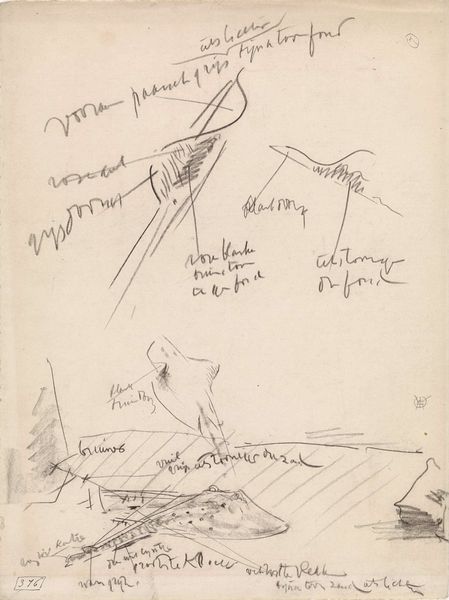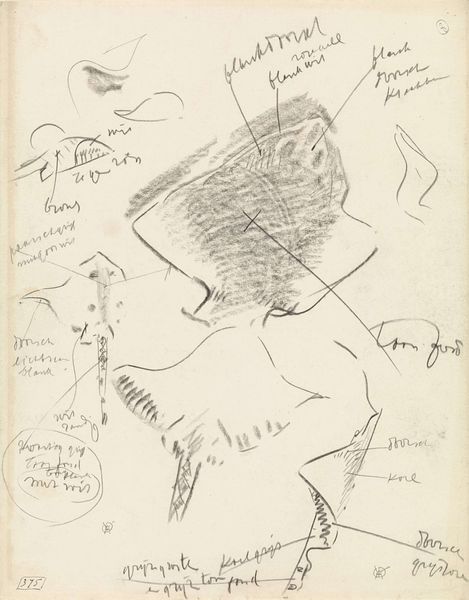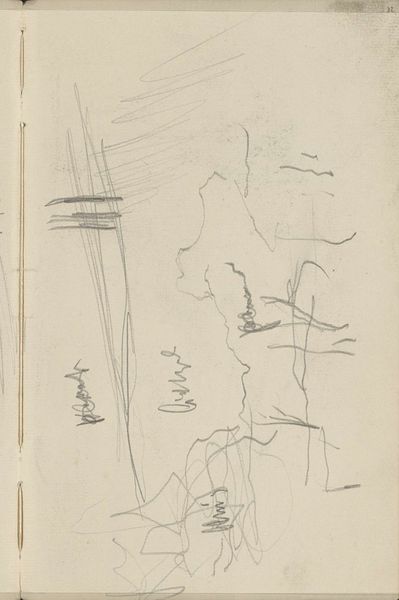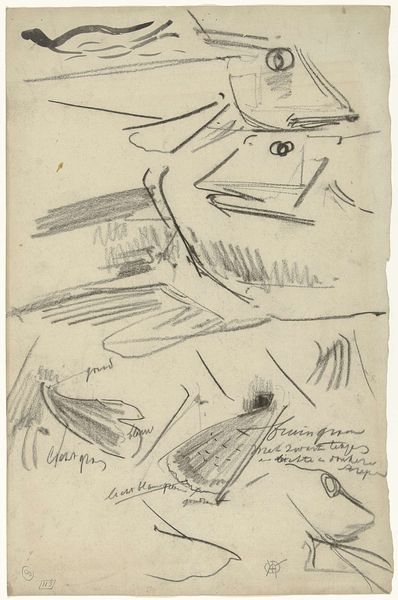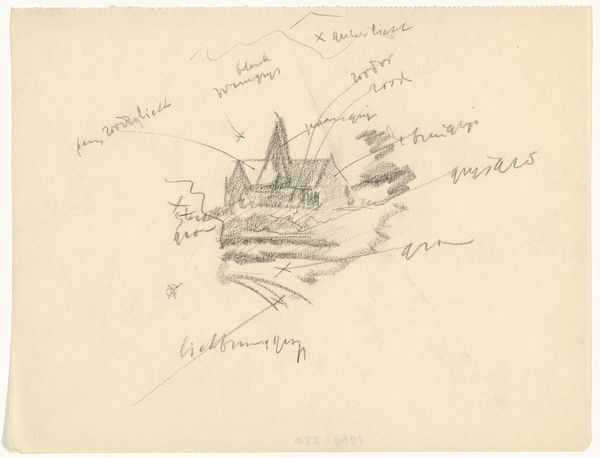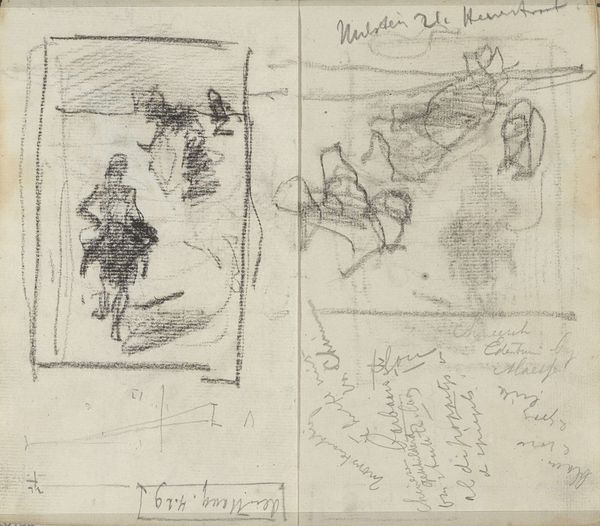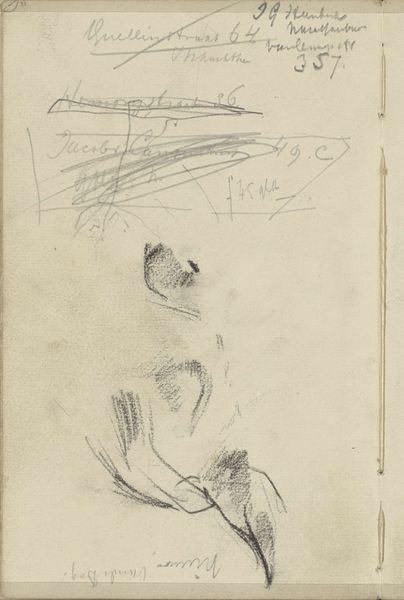
drawing, pencil
#
drawing
#
comic strip sketch
#
dutch-golden-age
#
pen illustration
#
pen sketch
#
landscape
#
figuration
#
personal sketchbook
#
ink drawing experimentation
#
sketch
#
pen-ink sketch
#
pencil
#
pen work
#
sketchbook drawing
#
storyboard and sketchbook work
#
sketchbook art
#
realism
Dimensions: height 430 mm, width 348 mm
Copyright: Rijks Museum: Open Domain
Editor: Here we have Gerrit Willem Dijsselhof's "Snoek, van onderen gezien," which roughly translates to "Snoek, Seen from Below", dated between 1876 and 1924. It's a drawing made with pencil and pen. It seems like a quick study, maybe from a sketchbook. It feels unfinished but there's a compelling energy in the lines. What strikes you most about this piece? Curator: The dynamism of the line is indeed quite captivating. Note how the artist has deployed hatching and cross-hatching not only to suggest volume, but also to articulate the interplay of light and shadow. The inscription annotates various tonal gradations and colors - light ochre, brown and blue, can you see how he attempts to capture reflected light and refracted colours by the quick and precise layering of marks? Editor: Yes, I see the layering you mean. The labels give me a deeper awareness of colour, even if this study only utilizes graphite. Also, look at the single viewpoint to illustrate the fish—how might its upward angle transform what it captures? Curator: The skewed perspective significantly contributes to the artwork's character. Do you observe how the distortion enhances the snoek's formidable and nearly frightening posture? It disrupts our standard perspective, presenting the subject from an unexpected angle, causing the viewer to perceive both strangeness and fascination simultaneously. Editor: That’s a great point, now that I know the piece better. Seeing how it shifts away from simple representation and into how Dijsselhof constructs form using just lines is eye-opening. Curator: Indeed. And focusing on line, tone, and annotation opens doors of interpretations that enhance our understanding of the art piece as an autonomous entity within itself.
Comments
No comments
Be the first to comment and join the conversation on the ultimate creative platform.
